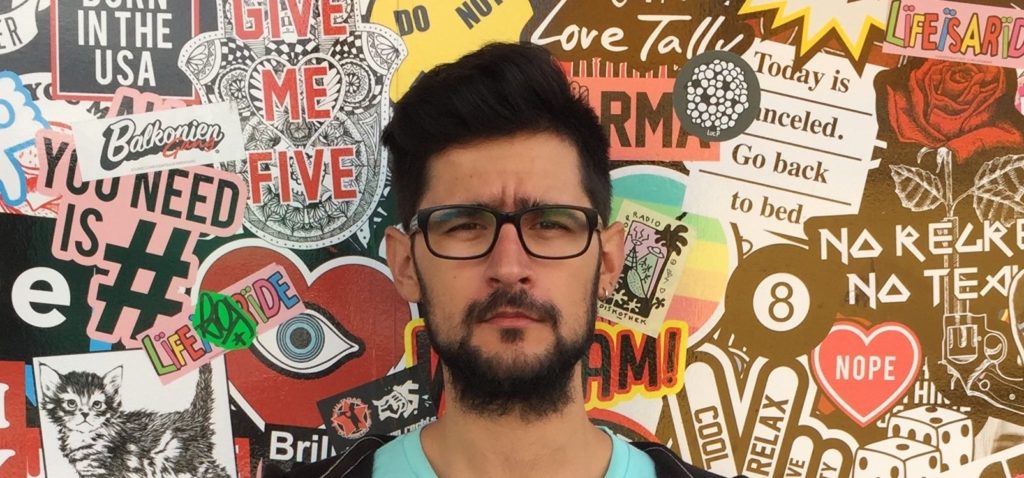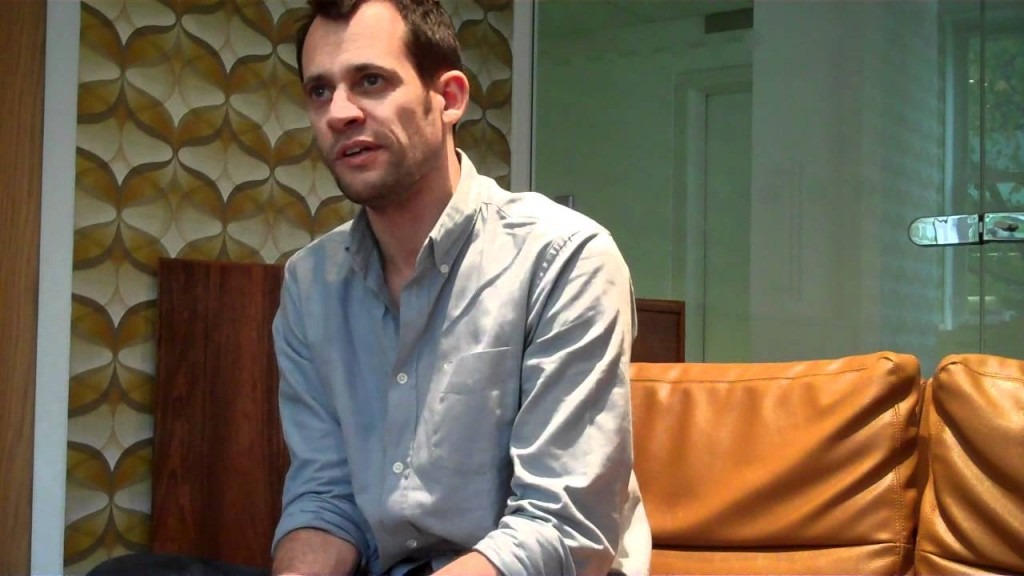
This newsletter was first published via email on 24th April 2016. You can also sign up to receive Ice Cream Sundae by filling the form on the right-hand column or here (since then the newsletter format changed from long to shorter form).
Spring is taking its time to show up here in London, the weather has been relatively chilly, alternating cloudy drizzle and sunshine for the past few days. Fortunately I don’t mind the weather, I’m happy to be back in London.
I’m still looking for a new freelance project to work on, and keeping my eyes out for full time roles in case something interesting comes up. In the meantime I started mentoring at the School of Communications Arts 2.0, a fantastic opportunity to work on exciting creative briefs with students. In addition to writing the weekly newsletter I’m slowly working to build a library of drafts for future editions as well. The podcast takes time too: scheduling and recording interviews, editing existing episodes and publishing weekly. Throw in some time to catch up with friends, do a few interesting things around London and my week is pretty full.
Sometimes I wonder how long I’ll be able to sustain writing these weekly essays with everything else, but so far so good. I’m contemplating the idea of seasons, like for TV series. I might take a break over the summer for a few weeks. This is the 30th Sundae; 30 weeks in a row, rain or shine. I’ll give myself a pat on the back for that. There, done.
Last week’s Sundae was pretty serious (for me at least), so this week I’m revisiting another one of my informal thematic series, those of you who subscribed a while ago might remember I wrote about theme parks in a series I called “A few of my favourite things”. Cue tunes from the Sound of Music. You can think of this new one as a companion piece. Last time I wrote about theme and amusement parks in general, now I’ll dive more specifically about some of these parks most important rides: roller coasters.
In France and much of continental Europe, they’re called Russian Mountains (“Montagnes Russes”) because that’s where the idea originally comes from.
“A good roller coaster is better than sex.”
~Michael Quinn, Letters to the Editor, Oui Magazine, January 1978
Depending on sources, the first Russian Mountains seem to have been built in the 17th century. It was a winter entertainment activity, essentially giant adult sized ice slides. They would build two facing timber towers, generally around 21 to 24 metres high (70-80 feet) but the highest on record was 60 metres (200 feet)! They’d ice 60 metres long (200 feet) slope on a 50-degree incline supported by wooden beams. Riders would sit on small sleds, most often just a block of ice with a rope to hold on to. They would come to a halt thanks to sand spread at the end of the slope, and then they could climb the stairs of the opposing tower for another go.
Catherine The Great liked these so much she asked for a summer version to be designed and built at her private residence. Instead of ice and sleds, it had rudimentary wheeled carts on grooved tracks. In the early 19th century, the French took the idea of the Russian Mountains and improved on them. They developed many improvements of early roller coasters, including the first loop in 1846.
As mentioned in an earlier Sundae about childhood fears, I was really afraid of roller coasters when I was younger. Now I love them. I started researching the hormonal mechanics of fear, pleasure and thrill seeking, though I’m probably only touching the surface for now.
I love this anonymous quote from a roller coaster designer:
“My job is basically to get as close to making people poop their pants as possible, then have them step off in ecstasy and want to go again.”
I can’t remember for sure the first roller coaster I went on and enjoyed. I think it was at Parc Asterix near Paris, known for a few good thrill rides, in particular Goudurix, a steel coaster open since the beginning of the theme park in 1989. It held the European record for the greatest number of inversions until 1995: 7. It’s known among enthusiasts as a rough and uncomfortable ride. I still loved it. I loved the traditional wooden coaster they built a few years later even more, Tonnerre de Zeus. Space Mountain in Disneyland Paris was also one of my favourites for a long time. As opposed to the traditional ride in America, this one featured a launched train rather than a lift, so you start the ride going really fast, and inversions.
Different people have different reactions to fear and excitement, in particular our brains release more or less of the hormones generated by instinctive fight or flight reactions. Dopamine is probably the most important one, usually called the pleasure or reward hormone. While complex in a way I admit to barely understand, dopamine has also been a hot topic in the world of branding and marketing these past few years. I may have already mentioned Simon Sinek’s Start with Why talk and book where he talks about dopamine release, pleasure and reward.
Brands aspire to generate a positive emotional trigger among consumers going above and beyond the functional or rational purpose of the products or services they promote.
I’ve been listening to this interesting podcast episode about branding and marketing from the perspective of the Cracked comedic website team. Another great classic reference is Positioning: The Battle for Your Mind by Al Ries and Jack Trout. The book treats with the idea of positioning a brand with meaning in the heads of people to the level of belonging to a collective unconscious.
What are the first words that come to mind when you read Coca-Cola? How about Volvo? And Nike? A brilliant visual example is the brand tags experiment, a simple idea showing how brands exist in people’s heads. It shows both some of the ideas the brand intentionally wants associated with them, like Coca-Cola and love, or Volvo and safety, and notions people have like an idea association between Nike and child labour. The site has 1.7 million tags so far, you can go and add a few more if ever you’re bored.
Back to roller coasters and thrill seeking in general. As I said, some people get more dopamine, adrenaline and endorphins from experiencing those kids of thrills. That’s why some people like them, others less so. And then one more ingredient is essential to end with a pleasurable experience: safety.
A truly safe environment is the key to really enjoy a scary roller coaster ride or a similar thrilling experience.
It’s a fine line between the safe environment giving us the confidence boost that follows the exciting or thrilling sensation of a roller coaster ride, and the ‘real’ experience of fear. Safety is the most important aspect of roller coaster design and where they naturally spend the most time. I feel reassured and apprehensive in about equal measures getting on board a roller coaster; the restraints make me feel like I’m in safe hands to enjoy the thrill of the ride.
Even for all the safety work that goes into roller coasters these days, there are still accidents, as the tragedy crash that happened last year at Alton Towers in the UK and cost two women their legs. Just this week they admitted the crash was due to human error and health and safety features. There is risk involved, but then again there’s risk involved in living any day, every day. According to this article you are way more likely to die or be injured while fishing than riding a roller coaster. In fact, if you’re in the UK somehow they calculated that your average chance of dying of any cause today is one in 41,667. Pretty gruesome, though luckily we don’t have to think about that all the time or else we would probably stop enjoying every pleasurable vice in life.
I recently learned from a friend that her parents first met on a roller coaster ride, and while researching for this Sundae I also learned there is a belief associated with some research in neuroscience stating you are more likely to be attached or attracted to someone if you meet them for the first time in a strongly emotional situation, fearful or happy. We associate the memory with the people we shared an experience with.
I rode the oldest roller coaster still operating: The Cyclone on Coney Island, New York with my brother and my little nephew back in 2003.
It was built in the early 20th century, opening in 1927. It makes a ridiculous amount of noise, the old carts are rickety and only feature lap restraints. It was heaps of fun. I loved it! My little nephew was absolutely terrified at first and then started to enjoy the ride. As per the earlier quote, by the time it was over he wanted another go.
The last theme park I visited with friends was Universal Studios in Singapore a few years ago and it doesn’t have that much by way of roller coasters, though there are two racing ones based on a Battlestar Galactica theme that were good fun. I’d love to go back to a theme park soon. Summer is coming up, maybe a visit to Alton Towers, Port Aventura in Spain or maybe even somewhere in the US could be a fun idea. If you’re into the idea of joining me for this, please give me a shout!
I’m sure the opening quote about roller coasters being better than sex is debatable. Talking about sex, I published an interview with Cindy Gallop in my podcast this week if you’d like to check it out. She is a renowned public speaker in the branding and advertising industry and also has a business called “Make Love Not Porn” dedicated to promote and talk about sex in a different way than pornography represents it. We had a fascinating conversation, though of course I’m biased in recommending it.
If ever you have any feedback or questions for me about the newsletter or the podcast I’m always happy to hear from you and reply. Lastly, if you know a friend who likes roller coasters and might appreciate reading this, please forward it to them.
All the best, enjoy the rest of your weekend!
Cheers
Willem



